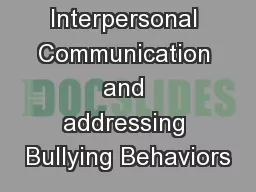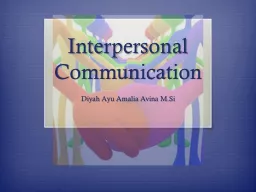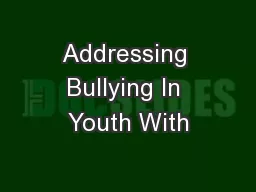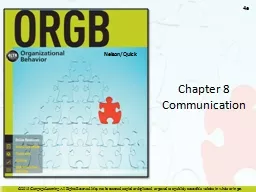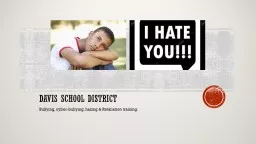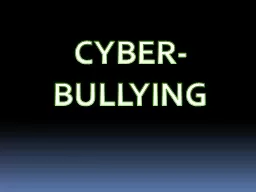PPT-Interpersonal Communication and addressing Bullying Behaviors
Author : pamella-moone | Published Date : 2018-11-03
Warm up Some people just want to watch the world burn Batman The Dark Knight What does this mean to you in reference to bullying and deviance Vocabulary Words Loathe
Presentation Embed Code
Download Presentation
Download Presentation The PPT/PDF document "Interpersonal Communication and addressi..." is the property of its rightful owner. Permission is granted to download and print the materials on this website for personal, non-commercial use only, and to display it on your personal computer provided you do not modify the materials and that you retain all copyright notices contained in the materials. By downloading content from our website, you accept the terms of this agreement.
Interpersonal Communication and addressing Bullying Behaviors: Transcript
Download Rules Of Document
"Interpersonal Communication and addressing Bullying Behaviors"The content belongs to its owner. You may download and print it for personal use, without modification, and keep all copyright notices. By downloading, you agree to these terms.
Related Documents

